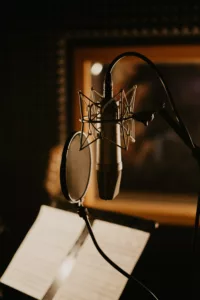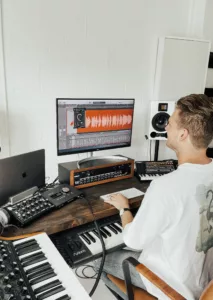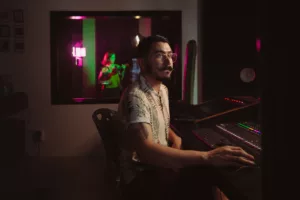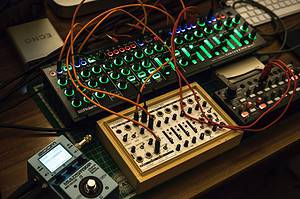
Giving Musicians the Tools to Make Better Music
The Ultimate Guide to Writing Lyrics for Other People

The Ultimate Guide to Writing Lyrics for Other People: How to Write Top Lines in 6 Steps
So you want to make a great topline eh?
Well, writing toplines for songs is a task easier said than done.
It’s not like you’re going to gust throw in spices in to the song pot and come out with a delicious dish. Writing toplines takes patience and practice!
My name is Mattie and I’ve written well over 1000 toplines in my career. I write toplines everyday for a living. I know what works and what doesn’t! With all that experience writing, I wanted to combine my knowledge of writing toplines together all in one place! Here are six essential ingredients to writing tasty toplines.
- Communicate with your client
- Brainstorm Ideas
- Find a catchy melody
- Write targeted lyrics
- Rewrite your song
- Practice!
Now, that laundry list of to do items may seem overwhelming when you are tackling the task of writing a topline for a song, but I promise that breaking down the task into smaller steps makes it so much more manageable to complete.
Let’s breakdown each of the points I’ve made in more detail.
1. Communicate with the Client
This step is all about getting on the same page with everyone involved in the music making process. Sometimes you’ll be working with a producer, sometimes you’ll work with a whole team. It’s essential to know what they’re expecting from you as the lyric writer.
It’s also essential to know what you can expect to be paid, how long you have to write, how many revisions they have access to, etc… But I’ll save the financial side of topline writing for another article.
This is the stage in the process where you find out what the lyrics might need sound like. What the topic should be about. It real a bummer when you’ve spent hours writing lyrics only to find that the producer that made the beat wanted the song to be about rainbows and sunshine and you only talked about unicorns and ponies.
Though we both know that your unicorn and pony song was an absolute banger that deserved to hit billboards hot 100, the simple fact that the producer wasn’t expecting the lyrics to be about that, will 9 out of 10 times result in you rewriting the song!
Sometimes producers don’t care what the hell you write about. The song and lyrics could be about a picnic table as long as the melodies are catchy and it sounds good! If they don’t, these are good opportunities to flex your creativity muscles. I would recommend feeling the vibe of a song before deciding a direction!
Don’t write a ballad love song to a punk rock backing track. Is the beat upbeat and happy? Think of a direction more smiley and less emo. But really, you can do whatever you want and sounds good!
2. Brainstorm Ideas
Now that you know what the other people you work with expect from you, it’s time to hit the ol’ brainstorm board. Before I write every song, I will brainstorm potential topics to write about. I find it so much more helpful and easier to write a song when I have a list of words that I’ve already thought of written out on the side of my paper.
If you’re still stuck living in the stone ages like me, you’ll probably write these out on a piece of paper. If you’re feeling extra digital, a computer also works. Let me give you an example of what I mean.
Let’s say that the the topic you’ve decided for a song is happiness and love. Yippee. I would divide my notebook into two parts, one where the lyrics will eventually go and one where I can spew out all of my brain vomit related to writing a happy, lovey song.
Some words and phrases I might think of would be: smiling, sunshine, warmth, bright, light, turn me on, get me going, up and at em, springing out, jump for joy, excited, joyful
Notice how bland and basic these words are. Pure vanilla. That’s exactly what we’re going for! We don’t want to get to caught up with minute details. We want the first things that come to mind. The more cliche the better.
Extend this exercise until you feel like you have enough material to pull from. I’d recommend at least 20 words or so. I use only about 20% of these words and phrases, but the more you have to choose from, the less likely you’ll encounter writer’s block! Woo!
3. Find a Catchy Melody
So you’ve got your list of potential words. Congratulations. You’re a hero. Now it’s time to find a partner in crime for those words on the ol’ brainstorm board. And by partner in crime I mean a melody.
The melody of the song is arguably more important the words themselves. Have you ever found yourself singing a song and asking yourself, “What do those lyrics even mean?” Then you’ll know what I’m talking about.
Listeners latch on to the feel of the melody and it’s rhythm just as much as they do the lyrics.
But how do you write a good melody? Well, there’s really no one path to good melody writing. For everyone it’s a little different, but I’ll share my process in hopes that it helps you.
To start with, I’ll feel the vibes of the song. (I know I said this earlier, but it really is that important.) And I’ll hum along with the backing track. I don’t hum the melodies and lines that I already hear in the track, but instead I imagine what the feel and rhythm would be of the future melody line I’m writing.
Many times it sounds something like this.
[Example of scatted melody line]
I’ll do that a few times until I get something I like. Sometimes I’ll record multiple scat/hum melodies and audition them against each other. I really don’t spend to much time on this though, because this serves more as a general guide than absolute line in the sand.
The lyrics that are coming up will most likely change this proposed melody idea.
4. Write Targeted Lyrics
The brainstorm is done. Melody outline is completed. Let’s write some actual lyrics! Before we write these though, let’s consider the genre of the song that we’re actually writing. Is it an indie song? A pop song? Either of those options yield vastly different results.
If I’m writing an indie song, I will purposefully include strange words and phrases. I might say something like the words minivan or indulgence. And if you didn’t include them in your brainstorm, then just add them in! Adding unique words gives it an indie flavor that the song might need.
If I’m writing a pop song, I will use simpler language with simpler words. I want the message to be as accessible as possible!
The lyrics need to be written with an idea of who is gonna hear the song! Sometime it helps me visualize an over-stereotyped persona of the person who will be hearing my song.
My indie persona is named Alfred and he has long dark hair, a beard, and some thick ray ban-esq frames. If I’m writing my indie song and I think Alfred is gonna like it less than non-organic coffee, then it’s back to the drawing board for me.
As I’m writing my lyrics, I’ll reference my brainstorm board. I’ll also try to fit the lyrics the melody that I already had in mind. I’m not too worried if it doesn’t 100% fit in there, but it helps to have a guide.
Keep track of your syllables as you write. The best flowing stanzas have both internal rhyme and symmetrical syllable structures. (This is another topic that I’ll write a whole another article on!)
As your writing, build up to your chorus! Many times it makes more sense to sing your verses in a lower vocal register than your chorus. You want the chorus to be the most exciting part of the song. If you can save some of your higher vocal register for that, than you’ll be cooking with oil!
If you ever aren’t sure of a topic to write about, check that brainstorm list you made! I told you it was a good idea. One strategy I use with my own brainstorm list, is to pick one of the phrases or words that I like and add it as the last part of the line. I’ll write the rest of my lyrics around that specific line so that the stanza ends with that special word.
Another tool I use all the time, are online rhyming dictionaries and thesaruses. Can’t think of a rhyme? Type in the word to an online rhyming dictionary and watch your troubles melt away. Tired of saying happy 30 times in a song? Search that ish up in a thesaurus to get a different way of saying it! My favorites are rhymezone.com and thesaurus.com. I use them both on almost every son
5. Rewrite Your Lyrics
So you’ve written your song lyrics! Awesome! But don’t send them out quite yet! The best songs, and I do mean the very best, have all gone through a rewriting process. It’s time to get out your critical magnnifying glass and analyze the lyrics that aren’t so hot.
I’m sure in your review of the lyrics, there will be parts that just don’t seem as strong as the others. Go back through and change them! I know. Crazy to think that that’s allowed. But it is! And it’ll give you the best results!
Sometimes this process changes one word, sometimes it’s a whole verse rewrite. Don’t stop until you feel it’s solid.
This step can be a slippery slope though. It’s one thing to rewrite a verse a few times to get a better result, and it’s another to rewrite the same song 20 times.
Keep in mind the law of diminishing returns while editing your song lyrics. The first edit and rewrite might make the song way better and might only take 5 minutes! But for the amount of time put in, the 20th rendition won’t yield nearly as much as a change.
Always keep moving in the song world. Don’t be stopped by the pursuit of perfection when trying to get your topline out. Rewrite a couple of specific parts, and then send it out!
6. Practice
You’ve just sent back your song. You’re rolling in the royalties that you got from it. People are coming to pat you on the back and tattoo your name on their chest. Nice! Wait. That didn’t actually happen? Well there’s one more part to the songwriting equation that’s the most important, practice.
Your first songs are gonna stink. Like 3 month old garbage stink. BUT the more you write song lyrics and toplines, the better you get at it! Pretty crazy right?
Use whatever methodology you want to write. Copy the strategies I use. Make up your own. Search for a video of somebody else’s. Whatever you do, you just gotta keep writing.
There is nothing that can replace the skill that comes with experience in melody writing and lyric writing. That’s the hard truth and that’s also why you won’t write a hit song after reading this article.
Conclusion
Well there they are! Wow! The six steps to writing some amazing toplines.
- Communicate with your client
- Brainstorm Ideas
- Find a catchy melody
- Write targeted lyrics
- Rewrite your song
- Practice!
I hope that this helped you in some way or maybe even inspired you to write one more song. Don’t get discouraged if your lyrics don’t sound professional yet. Major artists have entire teams dedicated to this process who write lyrics full time. And it’s tough to compete with their marketing budget.
You won’t write a hit song after this article, but you’ll be well on your way to making the best music you can.
Keep on writing. Keep on keeping on.
– Mattie
Check Out The Rest of Our Blog!
Mattie
Post Info
Join "5 Beat Friday"
Every week you'll get 5 beats about the production world. Join the over 5,000+ other producers bettering themselves through 5 Beat Friday!




